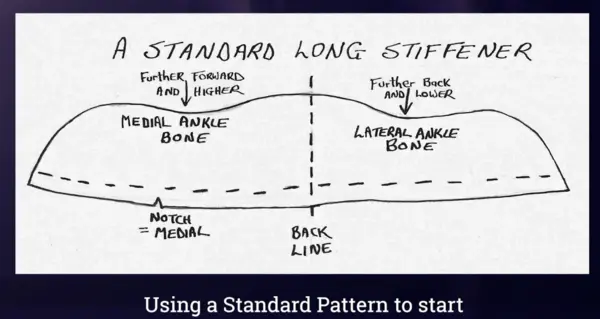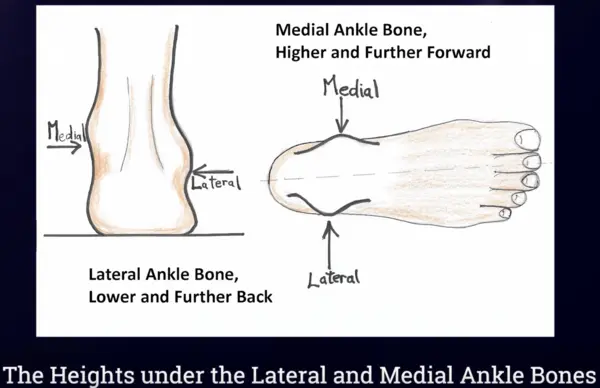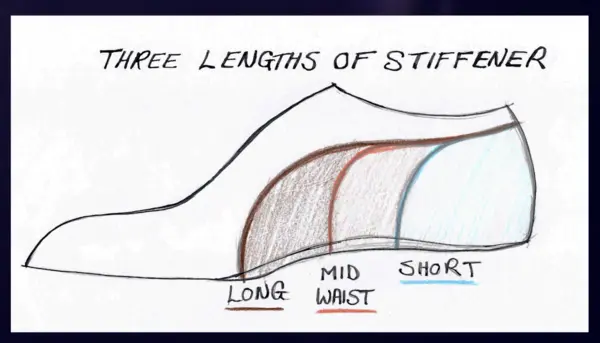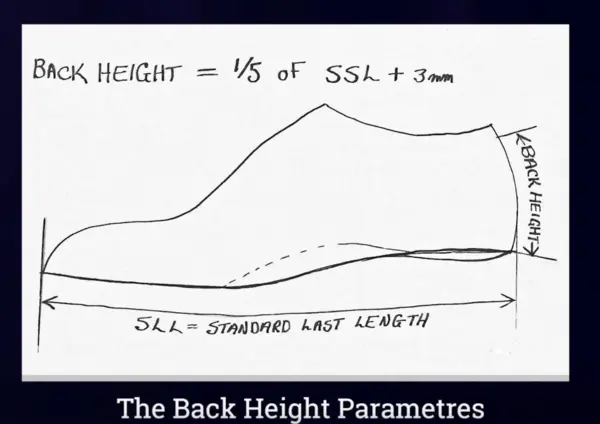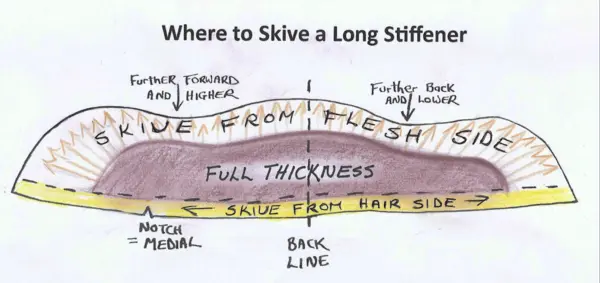YouTube video series by Bill Bird about patterning of stiffeners
Part 1
https://www.youtube.com/watch?v=PGZovvTIXlE
- upper drawn on the last
- design stiffeners on the last to see how they fold and bend
- standard pattern [for heel counter]
- they have paper patterns they’ve just kept copying for decades
- measure from just behind joints for length, find the nearest match to cut down
- cut paper with a clicking knife
- extend the index finger straight and run along the paper while cutting
- run the side of the thumb along the paper, too
- feels awkward at first
- worth it for controlling curved cuts
- three lengths of stiffeners
- medial longer than lateral
- back height
- shoe mustn’t cut into ankle bones
- will really hurt!
- outside quarter heights
- small lasts: ≤40mm
- big lasts (45-50): ≤45mm
- inside quarters
- small: 46-47mm
- big: ≤50mm
- have to stitch upper to can insert stiffener
Part 2
https://www.youtube.com/watch?v=XB8jngFYhJo
- place on the last
- gap beneath paper above and below CP should be about the same so it pulls taught without dipping below the featherline at the front
- lay paper on the last and fold the leading edges at the joints
- trace the featherline onto the pattern
- mark back height and other features, including quarters/topline
- 8mm lasting allowance, 10mm to be safe
- Bill cuts on a green self-healing mat mounted to a board
- label shoe, client, date on pattern
- draw the topline on the pattern
- will stretch forward a bit
Part 3
https://www.youtube.com/watch?v=UIBROzJh_UE
-
Salvatore Ferragamo trick
- from checking museum exhibition pieces
- keep stiffener high toward the back, but cut a curved dip 2 or 3 mm right at the back where it crosses the back line
- felt the shoe when a museum guard wasn’t looking
- can keep the last high there, but it’s soft and doesn’t hurt
- did it in all the shoes
- “Ferragamo dip”
- compares the pattern he just made up to a stiffener he made for the same shoe the day before
- to store stiffener: stretch apart and fold in half
-
2:03 skiving:
-
skive the top edge from the flesh side
-
skive the lasting allowance from the grain/hair side
-
leave the middle full thickness
-
feel with the hands for lumps and bumps
- apply paste with fingers
- making a laminated shell of the lining, stiffener, and upper leather around the heel
